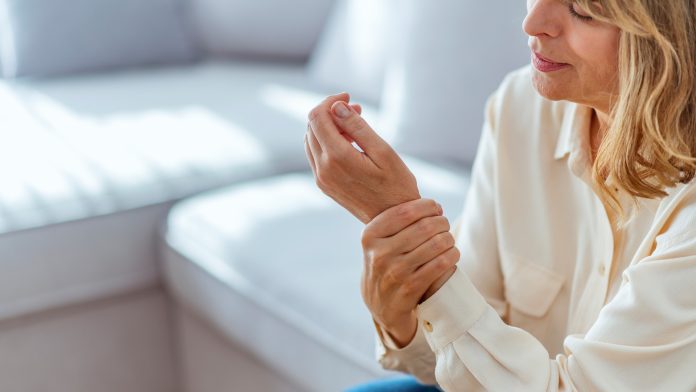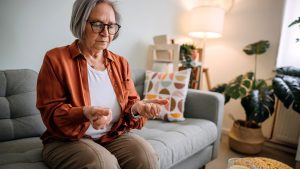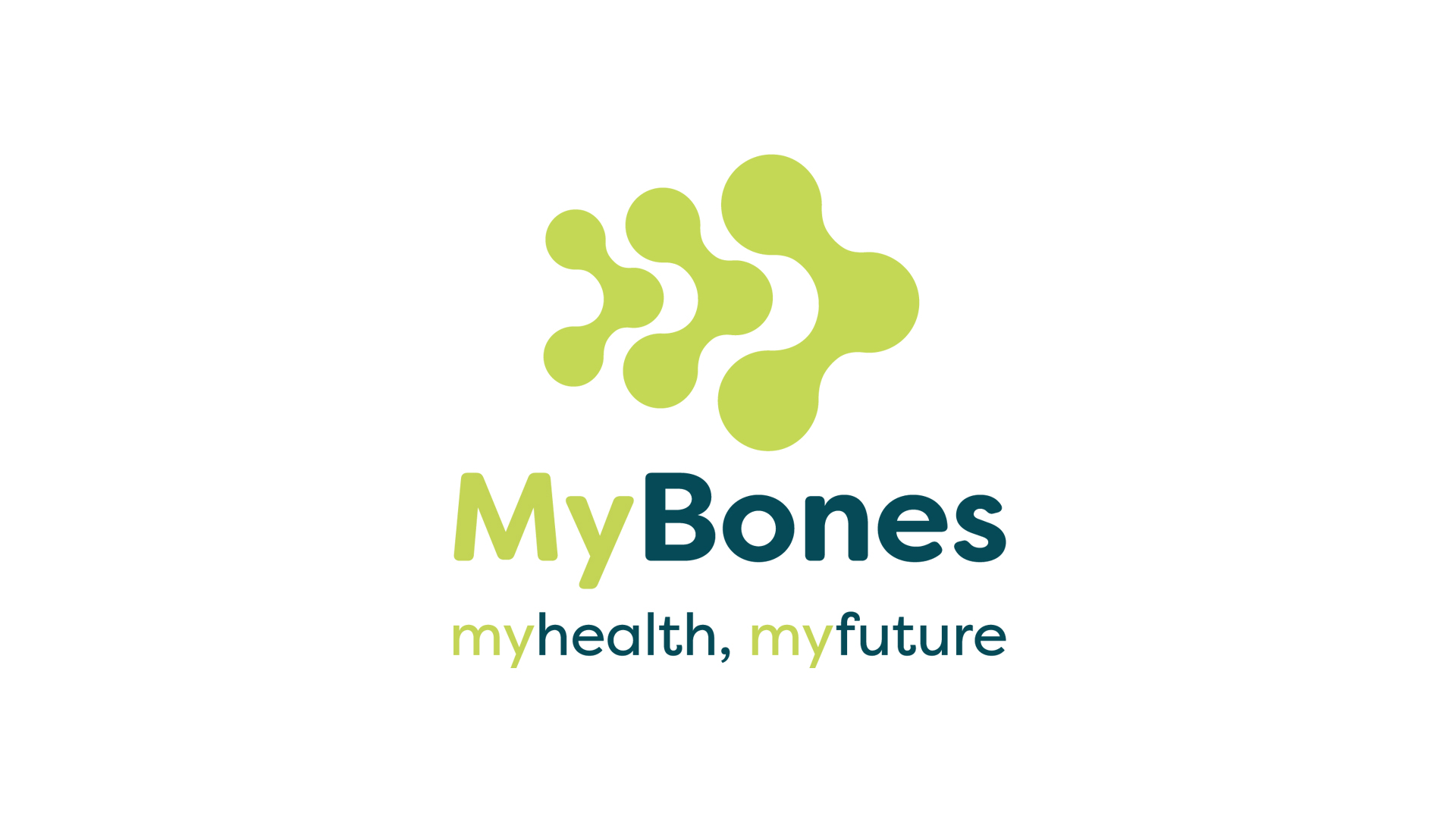
Michael Smith, Managing Director of MyBones, discusses how Low-intensity Vibration could prevent the development of osteoporosis.
Treating postmenopausal women with Low-intensity Vibration (LiV) could strengthen bones and prevent the development of osteoporosis. By waiting until the condition develops or worsens, patients run the risk of losing their freedom and flexibility, while healthcare providers must pay the price of treating falls and fractures and provide lifelong care for this chronic condition.
The link between osteoporosis and menopause first emerged during the 1960s as scientists explored how drops in oestrogen affect the bone remodelling process. At menopause, an oestrogen deficiency impairs the normal bone remodelling process (resting phase, activation, resorption, reversal and formation) by increasing osteoclastic resorption activity without a corresponding increase in osteoblastic activity. As a result, bone resorption is greater than that deposited, leading to bone loss and osteoporosis.
The science is relatively simple, but the figures are stark. For example, in 1995, the prevalence in the US of osteoporosis in postmenopausal women was estimated to be 14% among those aged 50-59, 22% of women aged 60-69 years, 39% women aged 70-79 years, and 70% women aged 80 years or greater.1 Over 25 years later, we can be confident that osteoporosis is a risk and a reality for tens of millions of women in the US, and potentially over half a billion across the world.
Approximately one in two women will break a bone because of osteoporosis in their lifetime, says the National Osteoporosis Foundation.2 Fractures are the outcome of a damaging loss of flexibility and freedom that severely affect quality of life, productivity and economic outcomes.3 Osteoporosis is limiting the future of women across the world.
The impact on health economics is acute at a time when financial pressure across the system is growing. Researchers have conservatively estimated the worldwide direct and indirect annual costs of hip fracture to rise to $131.5bn by 2050 – that is $21,000 per patient.4 In the UK, the yearly cost to the healthcare system from fragility fractures has been estimated at £1.8bn a year.5 Indirect healthcare costs could be much higher, all while providers struggle to cope with the costs of COVID-19.
Across the world, guidelines recommend that postmenopausal women are prescribed the oral bisphosphonates alendronic acid and risedronate sodium. However, their long-term use is not effective. An evidence review concluded that ‘relatively few high-quality health economic evaluations demonstrate the cost-effectiveness of drugs for postmenopausal osteoporosis’.6
For osteoporosis, the drugs do not work. This leaves most postmenopausal women to face the reality that their osteoporosis will become a chronic, life-limiting condition. Currently, healthcare providers must accept that falls and fractures are likely to become an increasing risk. In addition, the financial burden of falls and fractures will increase due to the rapidly ageing demographic. However, there are alternatives. Instead of focusing solely on treatment, we must shift the paradigm to prevention and embrace new technologies, such as Low-intensity Vibration (LiV), that are clinically proven to slow and even stop bone loss in postmenopausal women. Preventative treatments such as LiV could support millions of women to live independent lives for longer while saving the cash-strapped healthcare system billions every year.
Restoring flexibility and freedom
Studies have established that LiV has clinically proven potential as a treatment for postmenopausal osteoporosis and as a preventative technique that can strengthen bones and help women maintain freedom and flexibility into old age.
Low-intensity Vibration devices, such as Marodyne LiV, deliver a precise and targeted low-magnitude mechanical signal at a frequency of exactly 30Hz to the person standing on the device. These low acceleration, high-frequency vibrations encourage the body’s bone-building cells (osteoblasts) to work, sending signals to stimulate the body’s stem cells to reform bone and muscle tissue.

Scientists have proved that Low-intensity Vibration effectively prevents bone loss, something that all menopausal women should take seriously. A recent study concluded that ‘vibration therapy can provide a significant improvement in reducing bone loss in the lumbar spine in postmenopausal women’.7
A one-year placebo-controlled research study of postmenopausal women demonstrated that Low-intensity Vibration effectively inhibits bone loss in the spine and femur. In one study, the placebo group lost 2.13% in femoral neck bone mineral density (BMD) over the year, whereas the active cohort recorded a 2.17% increase in BMD. The researchers concluded that: ‘If used regularly, the progress of osteoporosis can be at least slowed down, stopped or even reversed’.
In the most recent research, published by the scientists in the Journal of Bone Mineral Researchers in 2021, scientists applied Low-intensity Vibration to postmenopausal women.8 Comparing the impact of treatment with LiV to a placebo group, the researchers established an increase in bone volume and bone mineral density.
The authors found that ‘The data are commensurate with the hypothesis that vibration therapy is protective against loss in mechanical strength and, further, that the intervention minimises the shift from the osteoblastic to the adipocytic lineage of mesenchymal stem cells’. Japanese researchers studying the impact of vibration techniques in animal models concluded that, ‘Stimulation activated osteoblasts and osteoclasts’.9 The findings suggest strongly that a ‘stimulation technique is effective in preventing osteoporosis by alleviating sudden bone density loss’.
Paradigm shift
For too long, osteoporosis treatment has focused on treating the symptoms with drugs, but it is clear that an alternative approach is needed. Alongside lifestyle changes, such as giving up smoking, cutting alcohol consumption and increasing physical activity, Low-intensity Vibration has been proven to slow and even stop bone loss in postmenopausal women. LiV is a crucial preventative measure for osteoporosis.10
Scientists studying the benefits of LiV found that applying vibration in early postmenopausal osteoporosis promotes osteogenic differentiation of bone marrow-derived mesenchymal stem cells and suppresses postmenopausal osteoporosis progression. The earlier it is used, the more effective it is.
In the absence of systemic adoption of LiV or changes to clinical guidelines, commercially available devices such as Marodyne LiV provide a clinically proven solution for patients. Marodyne LiV is a certified medical device that has been calibrated to deliver a controlled vibration under ISO and OSHA vibration standards (ISO 2631). Used correctly and for short periods, Marodyne LiV causes no adverse or harmful effects to users. It is also safe to use alongside all prescription medicines for osteoporosis (or any other condition for which the patient may require treatment).
By shifting the focus from treatment to prevention, we can more effectively manage osteoporosis and limit the damage of falls and fractures. The evidence around the impact of Low-intensity Vibration increases the calls for the therapy to be included in clinical guidelines. However, until healthcare leaders embrace the potential for prevention, patients can experience the benefits of Low-intensity Vibration themselves with Marodyne LiV.
References
- Melton, J. (2009) ‘Perspectives: How many women have osteoporosis now?’. Journal of Bone and Mineral Research. 10(2), pp. 175-177. DOI: 10.1002/jbmr.5650100202
- ‘What Women Need to Know’, National Osteoporosis Foundation (2021). Available at: https://www.nof.org/preventing-fractures/general-facts/what-women-need-to-know/ (Accessed: 7 September 2021)
- Whiteley, J. et al. (2013) ‘The Impact of Menopausal Symptoms on Quality of Life, Productivity, and Economic Outcomes’. Journal of Women’s Health. 22(11), pp. 983-990. DOI: 10.1089/jwh.2012.3719
- https://musculoskeletalkey.com/1-10-osteoporosis/
- Forde, C. et al. (2020) ‘Exercise for people with a fragility fracture of the pelvis or lower limb: a systematic review of interventions evaluated in clinical trials and reporting quality’. BMC Musculoskeletal Disorders. 21(1). DOI:10.1186/s12891-020-03361-8
- Md Azharuddin et al. (2020) ‘Systematic evidence of health economic evaluation of drugs for postmenopausal osteoporosis: A quality appraisal’. Osteoporosis and Sarcopenia. Vol 6, Issue 2. https://doi.org/10.1016/j.afos.2020.05.006
- https://josr-online.biomedcentral.com/articles/10.1186/s13018-016-0357-2
- Rajapakse, C. et al. (2020) ‘Effect of Low‐Intensity Vibration on Bone Strength, Microstructure, and Adiposity in Pre‐Osteoporotic Postmenopausal Women: A Randomized Placebo‐Controlled Trial’. Journal of Bone and Mineral Research. 36(4), pp. 673-684. DOI: 10.1002/jbmr.4229.
- YAO, R. et al. (2019) ‘A novel device to prevent osteoporosis by promoting bone metabolism using a newly developed double-loading stimulation with vibration and shaking’. Okajimas Folia Anatomica Japonica. 96(1), pp. 13-21. DOI: 10.2535/ofaj.96.13.
- Li, H. et al. (2019) ‘Applying vibration in early postmenopausal osteoporosis promotes osteogenic differentiation of bone marrow-derived mesenchymal stem cells and suppresses postmenopausal osteoporosis progression’. Bioscience Reports. 39(9). DOI: 10.1042/bsr20191011.
This article is from issue 19 of Health Europa Quarterly. Click here to get your free subscription today.








